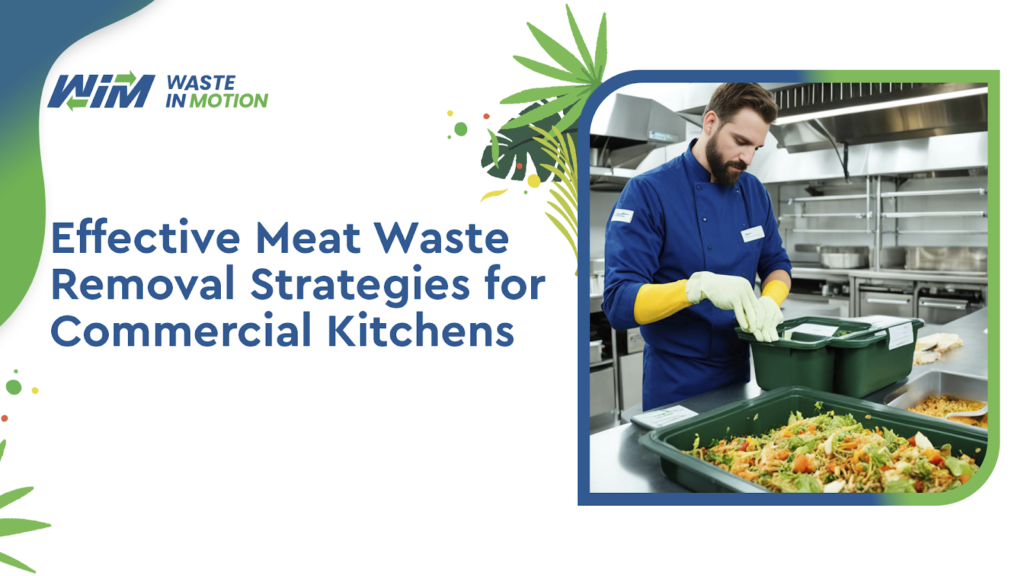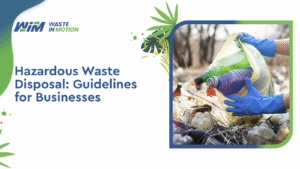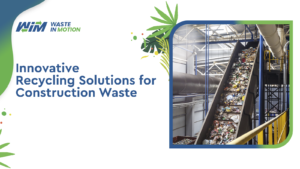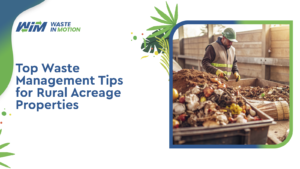Table of Contents
ToggleUnderstanding Meat Waste in Commercial Kitchens
In commercial kitchen waste management, meat waste is one of the most challenging aspects of food waste disposal. The perishable nature of meat means that improper disposal can lead to foul odors, pest infestations, and health hazards. Addressing meat waste removal effectively requires both proactive reduction strategies and sustainable disposal solutions.
Common Sources of Meat Waste
- Trimmings and bones from meat preparation
- Spoiled or expired meat due to improper storage
- Plate waste from uneaten portions
- Over-purchasing leading to excess stock
Challenges of Meat Waste Disposal
- Rapid decomposition and potential for contamination
- Regulatory restrictions on disposing of animal by-products
- High costs associated with sustainable waste solutions
- Environmental concerns such as methane emissions from landfills
Learn more about the importance of effective waste management.
Best Practices for Reducing Meat Waste
Inventory Management and Portion Control
Implementing precise inventory management techniques can significantly cut down on meat waste. Restaurants can:
- Use a first-in, first-out (FIFO) system to ensure older stock is used first
- Train staff on accurate portion control to minimize excess leftovers
- Monitor consumption patterns and adjust ordering accordingly
Explore how efficient waste management benefits businesses.
Proper Storage Techniques to Minimize Spoilage
Effective commercial kitchen waste management starts with proper storage methods:
- Keep meat at the correct temperature (below 40°F or 4°C)
- Vacuum-seal meat to extend shelf life
- Label and date all stored meat for easy tracking

Safe and Sustainable Meat Waste Disposal Methods
Composting Meat Scraps: Pros and Cons
✅ Pros:
- Reduces landfill waste and environmental impact
- Converts waste into nutrient-rich compost
- This can be done using specialized methods like bokashi composting
- Supports sustainable waste management practices
❌ Cons:
- Requires industrial-grade composters or specialized techniques
- Can attract pests if not managed properly
- Potential for foul odors if not handled correctly
- Not all composting facilities accept meat scraps
Compare composting and landfill disposal.
Rendering and Repurposing Meat Waste
One of the most sustainable meat disposal methods is rendering, where meat by-products are processed into usable materials such as:
- Animal feed
- Biofuel
- Fertilizers
Partnering with Waste Collection Services
Restaurants can collaborate with specialized food waste diversion services that focus on recycling or repurposing meat waste.
Find out more about recycling initiatives.
Regulatory Compliance for Meat Waste Disposal
Proper meat waste removal must comply with local and national regulations. Businesses should:
- Follow food waste disposal laws specific to their region
- Ensure grease trap maintenance to prevent plumbing issues
- Maintain records of waste disposal for inspections
Learn how waste management helps reduce pollution.

Role of Technology in Meat Waste Management
Smart Waste Tracking Systems
Using AI-driven tracking systems allows restaurants to monitor waste levels, track trends, and optimize purchasing decisions.
Automated Waste Sorting Solutions
Modern waste management systems can separate meat waste from other organic waste, ensuring efficient processing and recycling.
Conclusion
Implementing an effective meat waste removal strategy is essential for restaurants looking to improve commercial kitchen waste management. By reducing waste at the source, using sustainable waste solutions, and ensuring proper food waste disposal, businesses can lower costs and reduce environmental impact.
FAQs
-
What is the best method for meat waste removal?
The best method depends on the facility’s capabilities. Options include composting meat scraps, rendering, and partnering with food waste diversion services.
-
Can meat be composted safely?
Yes, but it requires specialized composting methods to avoid attracting pests and generating odors.
-
How can restaurants reduce food waste disposal costs?
By implementing portion control, proper storage, and sustainable waste solutions, restaurants can minimize waste and cut disposal costs.
-
Why is grease trap maintenance important in waste management?
Proper grease trap maintenance prevents blockages, reduces odors, and ensures compliance with health regulations.
-
What role does technology play in commercial kitchen waste management?
Technology helps optimize waste tracking, automate sorting, and enhance efficiency in food waste disposal processes.
By following these strategies, restaurants can improve their restaurant waste reduction efforts while ensuring compliance with environmental regulations.







